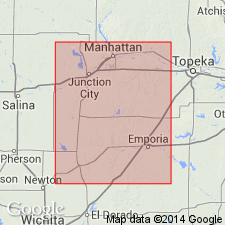
- Usage in publication:
-
- Florence flint
- Modifications:
-
- Original reference
- Dominant lithology:
-
- Limestone
- Flint
- AAPG geologic province:
-
- Sedgwick basin
Summary:
Pg. 771-786, 798. Florence flint. Two beds, each 10 feet thick, of massive fossiliferous limestone with prominent layers of flint, separated by 2 feet of white cellular limestone. Included in middle of Chase formation. Underlain by 31 feet of yellowish, chocolate, and greenish shales and overlain by buff shaly limestone. Age is Permian.
Named from Florence, Marion Co., eastern KS.
Source: US geologic names lexicon (USGS Bull. 896, p. 744); GNC KS-NE Permian Corr. Chart, Oct. 1936.
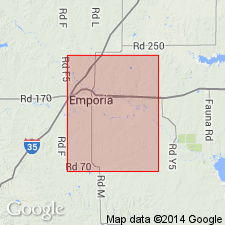
- Usage in publication:
-
- Florence flint*
- Modifications:
-
- Overview
- AAPG geologic province:
-
- Sedgwick basin
Summary:
Pg. 714. Florence flint. This formation is about 20 feet thick and consists of very cherty limestone separated by definite layers of chert, with a band of shaly or white cellular limestone near the center. It is excellently exposed on the McPherson branch of the Atchison, Topeka & Sante Fe RR, and in the Jones quarries along that railroad, from 1 to 2 miles northeast of Florence [Marion County, Kansas], and on this account in 1895 (Jour. Geol., v. 3, p. 773-) it was named the "Florence flint." Overlain by Fort Riley limestone and underlain by Matfield shales. Age is Permian (Chase).
[See also GNC remark under †Florence limestone.]
Source: Publication; US geologic names lexicon (USGS Bull. 896, p. 744); GNC KS-NE Permian Corr. Chart, Oct. 1936.
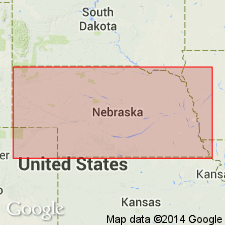
- Usage in publication:
-
- Florence flint member
- Modifications:
-
- Revised
- AAPG geologic province:
-
- Nemaha anticline
Summary:
Pg. 41. Florence flint member of Barneston formation (new) of Chase group. Thickness 23 feet. Overlies Matfield formation of Chase group; underlies Fort Riley limestone member of Barneston. Recognized in southeastern Nebraska and eastern Kansas. Age is Permian (Big Blue).
Source: US geologic names lexicon (USGS Bull. 1200, p. 1377); GNC KS-NE Permian Corr. Chart, Oct. 1936.
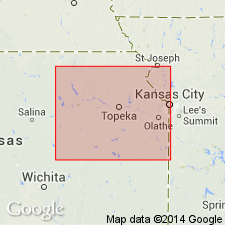
- Usage in publication:
-
- Florence limestone member*
- Modifications:
-
- Revised
Summary:
Pg. 12. Florence limestone. Basal member of Barneston limestone of Chase group. Flinty limestone. Thickness 30 feet. Overlies Blue Springs shale of Chase group and underlies Oketo shale member of Barneston. Age is Permian.
[See also GNC remark under †Florence limestone.]
Source: US geologic names lexicon (USGS Bull. 1200, p. 1377); GNC KS-NE Permian Corr. Chart, Oct. 1936.
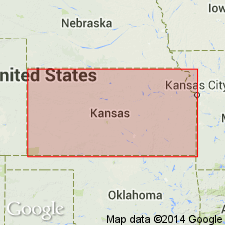
- Usage in publication:
-
- Florence limestone member
- Modifications:
-
- Overview
Summary:
Pg. 45. Florence limestone member of Barneston formation. Limestone, an abundance of flint, and a minor amount of shale; limestone is commonly lighter in color than the included nodules and layers of gray flint; shale partings common locally. Thickness between 35 and 45 feet. Underlies Oketo shale member [of Barneston]; overlies Blue Springs shale member of Matfield shale. Assigned to Wolfcamp Series (Lower Permian).
Source: US geologic names lexicon (USGS Bull. 1200, p. 1377).
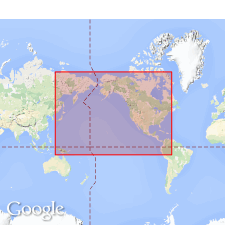
- Usage in publication:
-
- Florence Limestone Member*
- Florence Flint
- Modifications:
-
- Overview
Summary:
Florence Limestone Member of Barneston Formation of Chase Group; Florence Flint of Chase Group. Recognized in eastern Kansas, southeastern Nebraska, and central northern Oklahoma. Because of large amount of flint or chert it contains, the limestone has been known generally as the Florence flint. Age is Permian.
Source: US geologic names lexicon (USGS Bull. 1200, p. 1377).
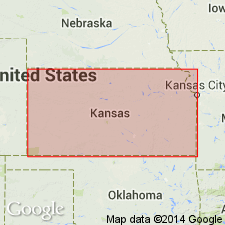
- Usage in publication:
-
- Florence Limestone Member
- Modifications:
-
- Overview
Summary:
(Paleozoic Era; Permian System by H.G. O'Connor, D.E. Zeller, C.K. Bayne, J.M Jewett, and Ada Swineford, p. 48.) Florence Limestone Member of Barneston Limestone of Chase Group. In Kansas, chiefly limestone with an abundance of chert and a minor amount of shale. The limestone is light-gray to yellowish-gray in color with nodules and layers of bluish-gray chert. Fossils include brachiopods, pelecypods, bryozoans, and fusulinids. Thickness 12 to 45 feet. Occurs above Blue Springs Shale Member of Matfield Shale and below Oketo Shale Member of Barneston Limestone. Age is Early Permian; Gearyan Provincial Stage (of H.G. O'Connor, 1963, AAPG Bull., v. 47, p. 1873-1877).
Source: Publication.
For more information, please contact Nancy Stamm, Geologic Names Committee Secretary.
Asterisk (*) indicates published by U.S. Geological Survey authors.
"No current usage" (†) implies that a name has been abandoned or has fallen into disuse. Former usage and, if known, replacement name given in parentheses ( ).
Slash (/) indicates name conflicts with nomenclatural guidelines (CSN, 1933; ACSN, 1961, 1970; NACSN, 1983, 2005, 2021). May be explained within brackets ([ ]).

